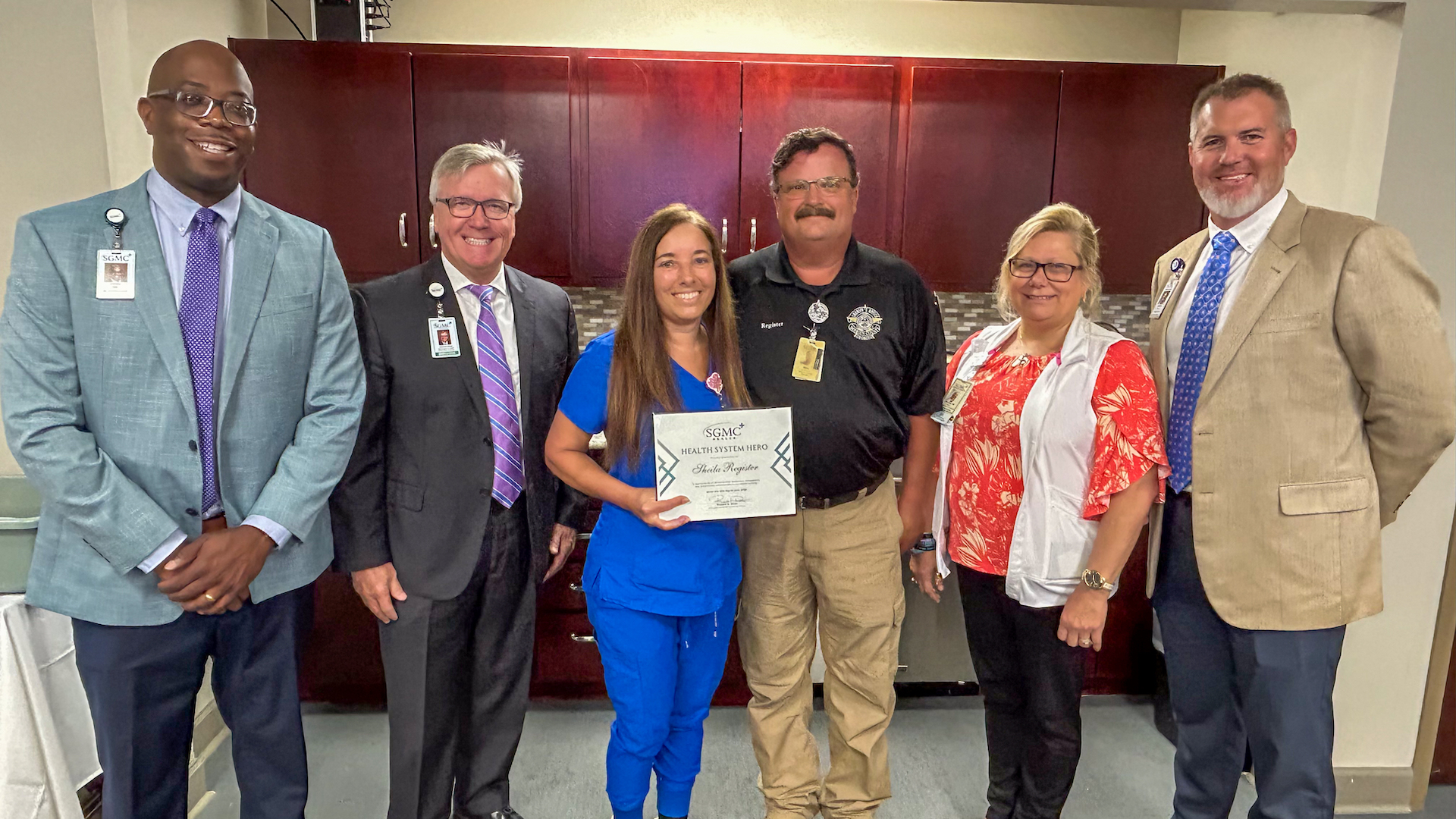Natural gas use expanding; station planned for Valdosta
Published 8:00 am Sunday, July 22, 2012

- Motorist Bob Davis fills up his airport shuttle van at a natural gas pumping station Thursday, Oct. 27, 2011 in College Park, Ga.
America’s dependence on foreign oil is as great a concern today as it was in the 1970s, when the worldwide energy crisis sent the country into a tailspin economically.
The energy crisis was a manufactured one, brought on in 1973 by the United States support of Israel in the Arab-Israeli series of wars following the Jewish nation’s creation after World War II. Members of OPEC, the Organization of Petroleum Exporting Countries, reduced oil production and placed on embargo on oil exports to the U.S., which resulted in short term shortages but long term resolve to find alternative sources of fuel.
The country responded by developing a number of alternatives, which have been in use in the U.S. for 20 to 30 years, and yet foreign oil dependence continues to rise. Finding the right mix of economic feasibility and availability was elusive until the last half decade or so when the ability to extract the nation’s abundance of natural gas reserves from shale became cheaper and easier.
Today, according to Tom Putnam of Langdale Industries, “There are more BTU’s of natural gas underground in the United States than Saudi has oil.”
Capitalizing on the natural resource’s increased availability is the next logical step for the country in an effort to decrease crude oil and gasoline consumption, said Putnam, in a recent meeting with officials from Valdosta and Lowndes County governments and school systems.
The Langdale Company will have a Compressed Natural Gas (CNG) fueling station up and running by March of 2013, and
Putnam said the company is committed to not only using the fuel in its own trucking operations, but wants to assure local officials that it will be for public use as well.
“Currently, there are approximately 1,000 compressed natural gas refueling stations across the country, but only half of those are public,” said Putnam. Given the proximity to Interstate-75, a refueling station in Valdosta would allow for a continuous supply for vehicles traveling from Atlanta to Miami.
One of the most exciting possibilities for CNG locally, said Putnam, will be the applications for school buses and utility vehicles, such as garbage trucks.
Valdosta City Manager Larry Hanson and Assistant City Manager John Whitehead attended the meeting, and Whitehead has previous experience in another state with municipal usages of CNG.
Hanson said the city is getting ready to replace some of its vehicles and is very interested in potentially converting to the greener alternative.
Putnam said it’s a win-win for local officials as the Langdale Company is investing the capital for the refueling station, so the cost to the governments and school systems will be for vehicles,not infrastructure.
In addition, although it can take several hours for a school bus or truck to be refueled on a “slow fill” fuel dispenser, the Langdale Fuel Company’s “fast fill” will allow for the vehicles to be refueled much faster, up to 8 vehicles in an hour.
Although the initial capital outlay for a CNG vehicle is more expensive, ranging from $4,000 to $11,000 for a personal car or truck, $27,000 for school buses, or $60,000 to 90,000 for heavy duty long range trucks, the long term savings are substantial and make up for the initial expense, said Putnam, giving Leon County Schools as a prime example.
“Leon County is committed to natural gas for their buses, and they anticipate $7,000 in savings per year, per bus. In addition, CNG engines last longer, an average of 15 years compared to a diesel engine at 12 years, and their replacement costs will go down as well,” Putnam said.
An article on School Bus Fleet, a national website for school systems, dated July 2011 states that the Leon County system’s goal is to transition its entire fleet of buses to CNG with 5 to 10 years.
The article quotes Leon County Superintendent of Schools Jackie Pons as saying, “The switch to natural gas will save the district millions of dollars over time — money we can reinvest in the classrooms. It’s significantly cleaner for our environment, and it reduces our dependence on foreign oil. That’s a triple win.”
The emissions reductions are important in meeting federal clean air guidelines, said Putnam, with a 90 percent reduction in particulate emissions and a 95 percent reduction in nitrogen oxides (NOx). Both are linked to respiratory diseases and air quality issues, according to the Environmental Protection Agency.
Putnam also quoted T. Boone Pickens several times in his presentation, the billionaire corporate raider who has leveraged his capital in support of Republican politics and alternative energy sources.
According to Putnam, Pickens says natural gas is “cheap, plentiful and ours.” His website, www.pickensplan.com, is dedicated to encouraging America to eliminate its dependence on OPEC oil.
On the website, Pickens states that Americans are just 4 percent of the world’s population but consume 21 percent of the world’s oil, and his plan calls for replacing transportation fuel with natural gas, providing incentives to Americans to make the switch to renewable energy, and to continue developing wind and solar power.
“Natural gas is not a permanent solution to ending our addiction to imported oil. It is a bridge fuel to slash our oil dependence while buying us time to develop new technologies that will ultimately replace fossil fuels,” states Pickens on the website.
The Department of Energy’s recently released “Annual Energy Outlook 2012,” states that natural gas consumption is likely to continue increasing to the point that the U.S. will stop importing natural gas and begin exporting by 2020. The highest demands are for heavy duty trucks and municipal vehicles while demand for personal vehicles will not increase significantly. The report states that the expensive up-front costs for NGV vehicles will discourage individuals as will the fact that most Americans don’t drive enough to justify the added expense.
According to Putnam, the use of natural gas to fuel vehicles is not new technology, but now that it’s an economic and an environmental issue, due to the many mandates for clean air and renewable energy sources, it’s become far more feasible and realistic for communities such as Valdosta to adopt.
About Natural Gas
Is CNG safe? It is flammable, but has a narrow flammability range as it’s lighter than air and dissipates quickly when released. It is nontoxic, colorless and odorless.
How do you know if you have a leak? The smell. The rotten egg smell is added to it to ensure it can be detected.
Is it cheaper than gasoline? Yes. Garbage trucks, school buses and city buses all typically save 15 to 20 percent annually on fuel costs.
What are the benefits? Fewer gasoline-carrying fuel trucks on the highway, as CNG is distributed via an underground network of pipes; cost savings for municipal and industrial usage; there is no projected shortage and the supply would not be interrupted due to natural disaster, such as a hurricane, or by foreign unrest.
What is the downside? Miles per gallon equivalent is lower in many vehicles; not enough availability of fueling stations at this time across the country; cost of conversion; and concerns with some of the drilling processes, including hydraulic fracturing.
Sources: The Langdale Company, www.cngnow.com, U.S. Department of Energy
For more on this story and other local news, subscribe to The Valdosta Daily Times e-Edition, or our print edition.





